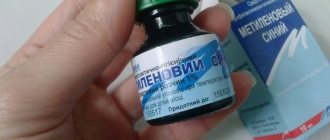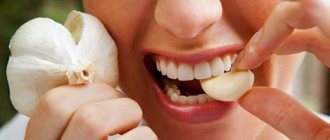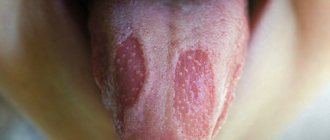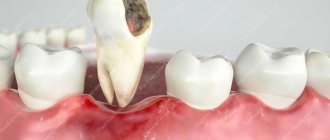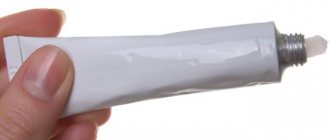Medicinal herbs and decoctions will help to completely get rid of a mild form of the disease, as well as at the very beginning of the development of the disease.
It is necessary to remember: herbal decoctions and infusions are also medicine; they should be used only after consultation with a doctor.
There are forms of the disease that cannot be treated without antibiotics and other medications. Therefore, folk methods and recipes for the treatment of stomatitis are of an auxiliary nature.
What is stomatitis
The disease is an inflammation of the oral mucosa. Stomatitis can become a complication after suffering an acute infectious disease (measles, diphtheria, scarlet fever), dermatological diseases (lichen ruber, exudative erythema, etc.) blood diseases (leukemia, agranulocytosis, hyperchromic anemia, etc.). It is also quite likely that it will appear after cancer treatment. Stomatitis is hereditary and can be transmitted by fungus or herpes. Its symptoms often appear after long-term treatment with antibiotics. Signs of stomatitis vary from minor redness of some areas of the mucous membrane to severe lesions accompanied by elevated body temperature.
Symptoms of stomatitis
This disease can be identified by the following unpleasant symptoms:
- Soreness, redness and ulcers on the oral mucosa.
- Bad breath, increased salivation.
- The appearance of visible ulcers on the inside of the cheeks, lips, and also in the palate.
- The severe course of the disease provokes the rapid spread of ulcers throughout the oral mucosa. The wounds begin to merge and increase in size.
- In addition to inflammation, purulent growths may form, which will be visible on the surface of the ulcers. In this case, there will be a yellow coating on the mucous membrane, and the overall body temperature will rise up to 40 degrees.
If you find even small ulcers in your mouth, you should seek help from a doctor as soon as possible. It is possible that such a disease developed under the guise of a complication of a serious illness.
Stomatitis - treatment in adults
The treatment technique involves local treatment of the affected areas. The following may be used:
- anesthetics;
- antiseptics;
- protective coatings;
- agents that accelerate tissue regeneration.
A complex of effective drugs for the treatment of stomatitis in adults should be selected by a doctor based on the cause and characteristics of the course of the disease. There is no single set of medications that would be effective in every case. Therapy is carried out symptomatically, and treatment is carried out in three stages.
- Disinfection . The oral cavity is irrigated with an antiseptic (chlorhexidine or another alcohol-free antiseptic drug).
- Treatment of ulcers . A product is applied to the affected areas that isolates the inflammatory foci from food exposure. This reduces the patient's pain and speeds up tissue recovery. Usually, Solcoseryl dental adhesive paste or Asepta gum balm are recommended.
- Stimulation of healing . In addition to isolating ulcerative lesions, it is necessary to accelerate local tissue healing. To speed up regenerative processes, you can use an oil solution of vitamin A.
General recommendations cannot be applied in every case when deciding how to treat stomatitis in adults. They apply only to mild, uncomplicated forms of the disease. If the doctor detects the presence of a concomitant infection or the patient’s condition worsens and the mucous membranes do not recover, antibiotic therapy is prescribed.
“If stomatitis occurs as a complication of any disease, it is treated together with related specialists,” comments Igor Repin. “If you follow the doctor’s recommendations, the uncomplicated inflammatory process goes away in a week and a half.”
pixabay.com/stevepb
Treatment of stomatitis
Any method of treating stomatitis must be approved by a doctor. Most often, the doctor prescribes a special diet, as well as taking an antibacterial drug in the form of a gel, ointment or solution. These measures are usually enough to eliminate the first symptoms of the disease and prevent it from developing. If severe pain occurs that interferes with eating and drinking, it is necessary to treat the oral mucosa with painkillers.
A severe form of stomatitis, accompanied by purulent formations and elevated body temperature, is treated not only with antibacterial agents and diet, but also with antibiotics.
Types of stomatitis
There are several types of stomatitis, the symptoms and treatment of which depend on the characteristics of the disease. The most popular in our country are the following three varieties:
- Catarrhal stomatitis
- the mildest form of the disease. Symptoms are limited to dry mouth and increased sensitivity of surfaces. If this form is not treated in time, it can lead to the formation of small ulcers on the gums, palate, and tongue. Wearers of dentures and orthodontic appliances are most susceptible to this type of stomatitis. The reason for the appearance is the poor quality work of the dentist, who did not make the prosthesis well enough, used unsuitable materials, or simply poorly adjusted the device to the jaw. Also susceptible to catarrhal stomatitis are smokers with plaque and who do not care for their oral cavity conscientiously or regularly.
- Aphthous stomatitis
. A chronic form of stomatitis, which manifests itself as a rash on the internal oral surfaces, weakness, and high fever. The rash is a collection of large numbers of small ulcers that are very painful and slow to heal. The healing period may take more than two weeks. A common symptom of this type of stomatitis is gastrointestinal upset. The cause of the disease is weakened immunity, vitamin deficiency. Let us remember that this is a chronic form that will return even with slight hypothermia.
- Herpetic stomatitis
. From the name it is clear that this form of the disease is associated with herpes and 90% of people with stomatitis suffer from this type. The activator is the herpes virus. Some people may get sick once, but in a dormant state the virus will remain in them forever and will not manifest itself. But most often this virus makes itself felt at the slightest weakening of the immune system. Well, stomatitis joins it if oral hygiene is not observed or performed irregularly, the mucous membrane has been injured, or there has been contact with an infected person. It manifests itself in the formation of blisters, which burst and become extremely painful ulcers, high temperature (up to fever).
Stomatitis is often accompanied by fever and painful swallowing. Remember that if you have had stomatitis once, it is very likely that you will have it again. Therefore, your first aid kit should always have medications and folk remedies for this disease.
Diet for stomatitis
Regardless of the chosen treatment method, if you have stomatitis, you must follow a special diet. It involves eating soft, well-ground food. These can be dietary concentrates, ready-made baby purees, cereals, cottage cheese, jellies, yoghurts. You should not eat spicy, sour, dry and salty foods - they will only negate the entire treatment process. Also, do not irritate the oral cavity with carbonated and alcoholic drinks.
After the acute symptoms of stomatitis are relieved, you can include soups in the form of puree or cream in your diet, eat broths without salt and spices, as well as steamed cutlets and boiled vegetables. If the ulcers are healing well, you can drink natural juices, except citrus fruits. All food should be at comfortable room temperature. Too hot or cold food will irritate the inflamed mucous membrane. To strengthen the skin, you need to take B vitamins.
Symptoms and treatment of glossitis
If you suspect glossitis, we recommend that you immediately consult a dentist. It is usually diagnosed visually, but is often associated with other diseases, the detection of which requires a series of tests.
Note!
Treatment of glossitis in a child is carried out using the same methods, but the doctor prescribes antibiotics and drugs that are more suitable for the child’s body and do not harm it.
Symptoms and treatment of desquamative glossitis
With this type of glossitis, patients experience a symptom called “geographic tongue.” Reddish spots of irregular shape appear on the tongue, framed by a white coating, resembling a geographical map. This type of glossitis is often associated with diseases of the internal organs.
Treatment of desquamative glossitis is aimed at reducing the risks of exacerbation of the disease, since most often this type is chronic. The tongue is treated with anti-inflammatory gels and solutions (chlorophyllipt solution, carotoline, etc.). For severe pain, novocaine blockades are prescribed. Phonophoresis procedures are actively used. It is recommended to follow a diet and take B vitamins.
Symptoms and treatment of folded glossitis
Folded glossitis is distinguished by deep longitudinal and transverse grooves in the tongue. As a rule, this type is congenital, but can be acquired as a result of injuries, burns and infections. Often accompanied by desquamative glossitis. Treatment is carried out if there is a burning sensation, pain and difficulty breathing.
In the absence of inflammation and discomfort, treatment is not carried out. If the patient is bothered by pain and burning, then antiseptic solutions (in particular, chlorhexidine) and anti-allergenic agents (if there are allergies to foods) are used. Doctors also advise against eating too spicy or salty foods.
Symptoms and treatment of catarrhal glossitis
It is characterized by swelling, redness and a white coating on the surface of the tongue. Usually occurs as a result of mechanical, thermal and chemical damage.
Treatment with antiseptic and anti-inflammatory agents is used (especially if the cause of glossitis is trauma), nutrition correction and vitamin intake are also useful.
Symptoms and treatment of candidal (mycotic, or yeast) glossitis
Can be distinguished by a thick layer of plaque on the tongue and an unpleasant odor. As a rule, it does not cause pain or great discomfort, but occurs due to poor hygiene and disruption of the microflora of the oral cavity.
Treatment of candidal glossitis (also known as mycotic and yeast) is carried out with the aim of normalizing the microflora of the oral cavity. First of all, this is sanitation and taking antifungal drugs (Fluconazole, Nystatin and others).
Symptoms and treatment of rhomboid glossitis
It is often one of the manifestations of diseases of the gastrointestinal tract. With rhomboid glossitis of the tongue, the layer of epithelium thickens in a certain area, which in its shape resembles a rhombus or rectangle. In most cases, the disease is accompanied by the appearance of plaque.
Rhomboid glossitis is usually a consequence of problems with the gastrointestinal tract. Effective treatment requires elimination of the underlying disease. For severe pain, anesthetics are prescribed.
Symptoms and treatment of ulcerative glossitis
Identified by small round ulcers on the surface of the tongue - aphthae. Ulcerative glossitis is often associated with aphthous stomatitis and may be one of the stages of catarrhal glossitis.
Treatment usually follows the same scheme as for catarrhal glossitis. Ointments and gels are prescribed separately for faster healing of ulcers (Solcoseryl, Vinizol, etc.)
Symptoms and treatment of purulent-phlegmous glossitis
It affects the deep tissues of the tongue and adjacent areas of the oral cavity. One of the most severe forms, in which the temperature rises and intoxication of the body is observed.
In this form, glossitis is most often treated with antibiotics (Doxycycline, Ceftriaxone, Rocephin and others). In severe cases, surgery may be required. It is necessary to monitor the course of the disease after antibiotics. Treatment is usually aimed at restoring the body after taking the above-mentioned drugs. Antibacterial therapy is actively used.
Symptoms and treatment of Gunter's glossitis
Möller-Gunter glossitis usually occurs as a manifestation of serious problems with the circulatory system, in particular anemia. The surface of the tongue becomes smooth and has an unhealthy bright red or crimson color. May also be associated with vitamin B12 deficiency.
Indications are primarily for the treatment of anemia and the intake of vitamin B12.
Symptoms and treatment of villous glossitis
The most unpleasant form of the disease. The filiform papillae become thickened and keratinized and the surface of the tongue changes color (becomes dark brown).
This type of glossitis is the least studied, and the exact causes of its occurrence have not been determined. Among other things, experts name genetic predisposition, infections, medications and bad habits.
Indications: surgical excision of hypertrophied and keratinized filiform papillae, treatment of the surface of the tongue with antiseptic and antimicrobial agents (resorcinol, salicylic alcohol, etc.).
Treatment of stomatitis with soda
The most popular methods of treating stomatitis with folk remedies are based on this product. There are several recipe options that will help relieve unpleasant symptoms of the disease, stop the growth of ulcers, and also speed up the healing process. The simplest recipe with soda is the use of a cotton swab and an aqueous solution. Dilute 1 teaspoon of soda into one glass, and then dip a cotton swab or a piece of bandage in the solution. The compress should be applied to the affected areas of the skin several times a day, leaving them in the mouth for 10-15 minutes. Soda for stomatitis very quickly copes with ulcers and cracks in the mucous membrane. In addition to compresses, it is necessary to rinse with a solution. Usually 2-3 rinses with baking soda per day are enough.
Prevention
To reduce the risk of disease, it is necessary to pay sufficient attention to oral hygiene: brush your teeth twice a day, remove plaque and tartar in a timely manner. Be careful not to put dirty objects in your mouth. The disease can be caused by the habit of biting nails, pen caps, or trying unwashed berries, fruits, and vegetables at the market.
“Be careful with cuisine that is exotic for you,” advises Igor Repin. “In addition to the fact that instead of expanding your culinary sensations, you can get an unpleasant disease, no one has canceled allergic reactions.”
Treatment with chicken eggs
In traditional medicine, chicken eggs are often used in recipes. This product contains a useful element - lysozyme. During the period of illness, the human body experiences an acute shortage of this element. Treatment of stomatitis with folk remedies is also not complete without a chicken egg in the composition. The recipe for this product is not complicated. You just need to wash the egg thoroughly, boil 100 ml of water in a small saucepan and release only the white into it. Then you need to mix the resulting mixture well, set aside and cool. You need to rinse your mouth with this folk medicine up to 5 times a day.
Traditional recipes using vegetables
Garlic is considered the leader among vegetables with bactericidal properties. It not only fights bacteria and pathogenic fungi, but enriches the body with vitamins. This vegetable can be used in recipes for treating stomatitis. To prepare the medicine, you need to finely chop the garlic so that you get a tablespoon of pulp. Then you need to mix it with a teaspoon of kefir. The prepared ointment for stomatitis should be applied to the ulcers in a targeted manner and kept for no longer than 3 minutes. The procedure can be repeated up to 3 times a day. Garlic medicine should not be left on the mucous membrane. Otherwise you may get a severe burn.
A more gentle option for treating stomatitis with folk remedies is the use of carrots and potatoes. To do this, you need to grate the potatoes on a grater or in a blender. The resulting paste is applied to the areas of skin affected by stomatitis. Such compresses can be done up to three times a day. Rinse with freshly squeezed carrot juice. However, before treatment, it is recommended to dilute it with boiled water in equal proportions.
Infusions and decoctions for rinsing
The most effective way to treat stomatitis with folk remedies is considered to be rinsing with various infusions of herbs and plants. For this you can use yarrow, chamomile, sage, comfrey, calendula, horsetail, walnut leaves, oak bark and St. John's wort. These plants and herbs for stomatitis have a powerful anti-inflammatory effect, and also perfectly cleanse the oral mucosa of plaque and kill bacteria. To heal ulcers, you can use an infusion of nettle, calamus rhizome, rose and basil. An important advantage of using herbal remedies is that they can be used in combination with drug treatment.
Anyone who has encountered this disease should know how to rinse their mouth against stomatitis. It can be a decoction or herbal infusion. To prepare the decoction, you need to grind the medicinal plant in a coffee grinder or blender. Then pour boiling water in the required proportion and boil for about 10 minutes. After this, cover the broth tightly with a lid and leave to cool. A folk medicine can be from one plant (sage, chamomile, oak bark or calendula) or from several (herbal mixture). When the broth is infused, it must be strained and cooled to room temperature. After daily rinsing, it can be stored in the refrigerator. However, doing this for more than 3 days is not recommended. The medicine will already lose its healing properties. It is best to use the decoction during the day.
The best and proven recipes
From the abundance of medicinal herbs, it is quite difficult to choose the right recipe for treating stomatitis in adults using folk remedies. Therefore, it is better to use one of the most proven in traditional medicine:
- Grind dry eucalyptus to make a tablespoonful. Brew it with a glass of boiling water and put it under the lid to infuse.
- Grind the dried oak bark to make two tablespoons. Pour them into a deep container, pour a glass of boiling water and put on low heat. The broth should be boiled for no more than 10 minutes. Then leave it covered for 1 hour and rinse your mouth with it up to 8 times a day.
- Pour two tablespoons of crushed lingonberry leaves into 1 glass of hot water. Place the container in a water bath and cook for 30 minutes. Cool to room temperature and rinse your mouth up to 5 times a day.
- Two tablespoons of dry yarrow must be brewed with 500 ml of water. Then you should boil the medicinal decoction for 15 minutes over low heat and strain. This is an excellent product for baths and rinses.
- One tablespoon of sage should be brewed with a glass of water. Leave it covered for 30 minutes and then use it as a rinse aid.
- Pour three tablespoons of dry chamomile inflorescences into a glass of hot water. Then leave it covered for half an hour and rinse your mouth up to 6 times a day. Chamomile has antiseptic, sedative and anti-inflammatory properties.
Diagnostics
If inflammatory elements appear in the oral cavity, you should consult a doctor. Even if the lesions are minor and accompanied by mild discomfort, it is important to find out their cause and choose the right treatment tactics. Otherwise, the disease may drag on or cause complications. In addition, it can be contagious and therefore dangerous to others.
“Not every stomatitis is contagious,” says dentist Igor Repin. “For example, if it is caused by injury or chemotherapy treatment, then there is no reason to be afraid of infecting someone with it. The disease can be contagious if caused by a bacterial or viral infection. But it is important to note that determining what kind of stomatitis has developed is often a big problem even for doctors.”
Diagnostic tactics usually include:
- examination of the patient's oral cavity;
- accompanying skin examination;
- study of anamnesis.
When studying the anamnesis, the doctor clarifies whether the disease has arisen for the first time or whether it recurs regularly - recurs. Does the patient have any concomitant diseases, including sexually transmitted infections, diseases of the digestive tract or an immunodeficiency state? Have you recently used chemotherapy or other drugs that could cause damage to the oral mucosa?
Based on the data obtained, the specialist selects a technique for effective treatment of stomatitis in adults using drugs for local or systemic action.
The most useful folk remedies for stomatitis
From all the abundance of medicinal herbs, plants and other remedies, it is necessary to highlight the most effective ways to overcome stomatitis. The most useful of them are:
- Calendula tincture. For stomatitis, it is used to disinfect the oral cavity, and also as an anti-inflammatory agent. To prepare the medicine, you will need half a teaspoon of tincture purchased at the pharmacy and 100 ml of water. You need to rinse your mouth with the prepared solution 4 times a day.
- Aloe leaf juice. The plant is known for its antiseptic and anti-inflammatory effects. In case of an inflammatory process on the oral mucosa, it is necessary to apply an aloe leaf cut in half to the ulcers. The procedure for this folk method of treating stomatitis can be carried out up to three times a day.
- Flax seeds. They enhance mucosal regeneration. To treat stomatitis, a decoction of the seeds is used. It's quite simple to prepare. You need to pour 1 tablespoon of seeds with a glass of hot water and leave under the lid for half an hour. The finished infusion should be filtered and rinsed in your mouth until recovery.
- Sea buckthorn oil. For stomatitis, it is used to heal the oral mucosa. Sea buckthorn oil should be lubricated on the affected areas of the skin 3 times a day. After each procedure, it is not recommended to eat or drink for an hour.
- St. John's wort. A homemade remedy made from its inflorescences soothes inflamed tissues and also promotes their regeneration. St. John's wort is infused in ethyl alcohol for about 2 weeks, filtered and used as a tincture for rinsing. One teaspoon of tincture should be diluted in a glass of water and rinsed with mouth several times a day. Alcohol tincture can only be used as a treatment for stomatitis using folk remedies in adults.
- Pharmaceutical camomile. Its inflorescences are known for their antiseptic, anti-inflammatory and sedative effects. To prepare the infusion you will need 3 tablespoons of flowers and a glass of boiling water. The medicine is infused under the lid for half an hour, and then used for rinsing until recovery.
- Burnt alum. They are not used every day for stomatitis. A few treatments per week are enough. The alum solution should be weak. Only a light concentration will help get rid of ulcers on the gums, oral mucosa and under the tongue.
Treatment with honey and propolis
Treatment with honey and propolis
Propolis has unique antibacterial and anti-inflammatory properties. An alcohol tincture of propolis for stomatitis allows you to get rid of the resulting aphthae. The drug not only disinfects, but also anesthetizes the inflamed surface.
It is necessary to dissolve a teaspoon of the medicine in a glass of warm water, rinse the mouth with the resulting solution or use it for applications and lubrication of ulcers. It is advisable to first disinfect the affected area with hydrogen peroxide, and then apply propolis.
The medicine is used for:
- rinsing;
- applications;
- wiping.
It is strictly forbidden to apply alcohol tincture directly to canker sores!
Honey has powerful antiseptic properties and is included in many proven folk remedies. However, among doctors there is no clear answer to the question of how to treat and whether stomatitis can be treated with honey. It is believed that it can promote the proliferation of pathogenic bacteria.
Honey is most often used to treat diseases in children.
One of the most popular recipes is the egg-honey mixture. To prepare it you need to take:
- one egg (white);
- a teaspoon of honey;
- 1 ampoule of novocaine;
- one ampoule of vitamin B1 and B6.
Beat the resulting mixture well, take 1 tablespoon orally before meals, keep this portion in your mouth until completely absorbed.



